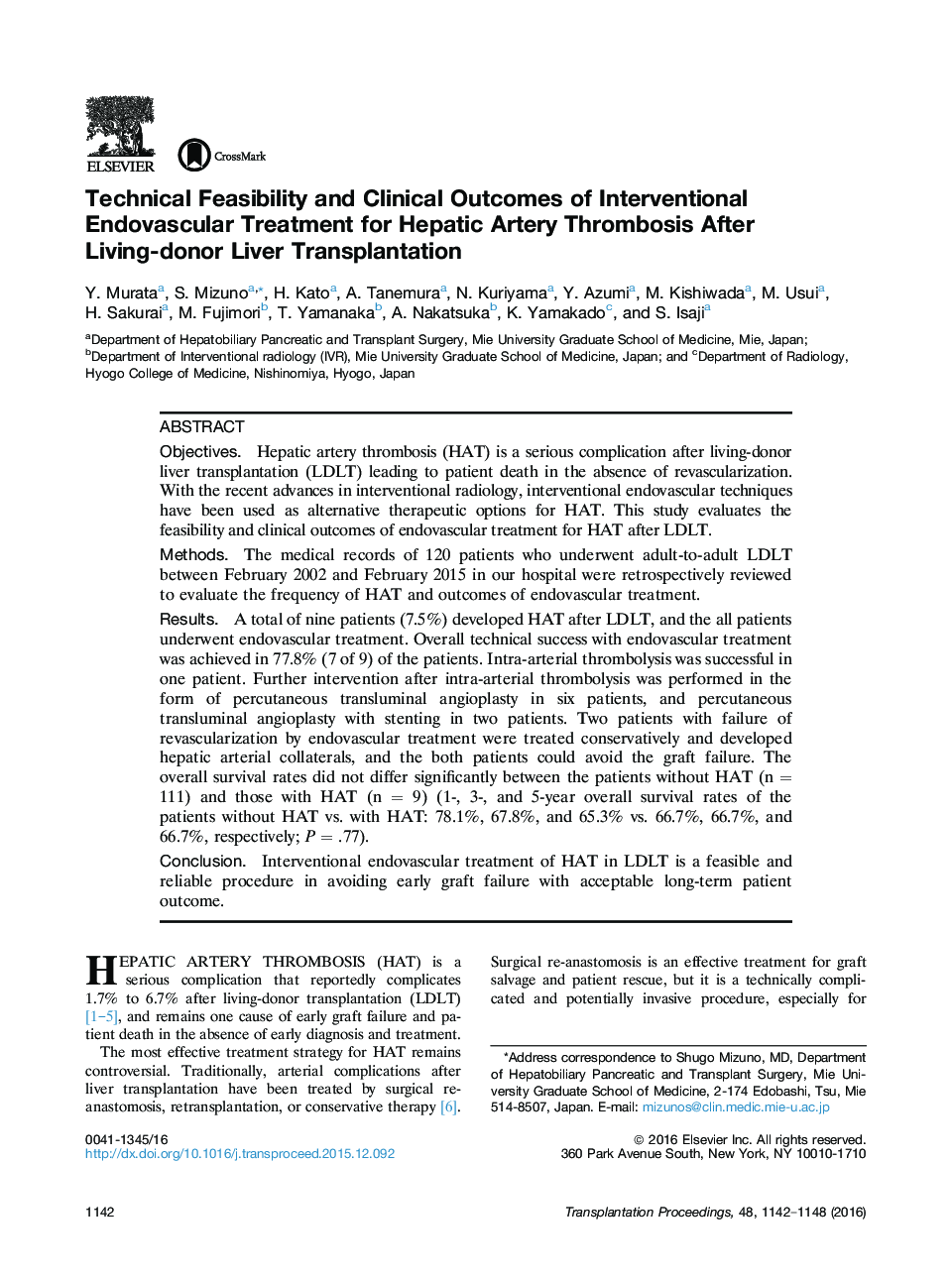| کد مقاله | کد نشریه | سال انتشار | مقاله انگلیسی | نسخه تمام متن |
|---|---|---|---|---|
| 4255978 | 1284506 | 2016 | 7 صفحه PDF | دانلود رایگان |
• A total of nine patients (7.5%) developed HAT after LDLT and the all patients underwent endovascular treatment.
• Technical success with endovascular treatment was achieved in 77.8% (7 of 9) of the patients.
• The overall survival (OS) rates did not differ significantly between the patients without HAT (n = 111) and those with HAT (n = 9) (5-year OS rates of the patients without vs. with HAT: 65.3% vs. 66.7%, P = .77).
• Endovascular treatment of HAT is a feasible and reliable procedure in avoiding early graft failure with acceptable long-term patient outcome.
ObjectivesHepatic artery thrombosis (HAT) is a serious complication after living-donor liver transplantation (LDLT) leading to patient death in the absence of revascularization. With the recent advances in interventional radiology, interventional endovascular techniques have been used as alternative therapeutic options for HAT. This study evaluates the feasibility and clinical outcomes of endovascular treatment for HAT after LDLT.MethodsThe medical records of 120 patients who underwent adult-to-adult LDLT between February 2002 and February 2015 in our hospital were retrospectively reviewed to evaluate the frequency of HAT and outcomes of endovascular treatment.ResultsA total of nine patients (7.5%) developed HAT after LDLT, and the all patients underwent endovascular treatment. Overall technical success with endovascular treatment was achieved in 77.8% (7 of 9) of the patients. Intra-arterial thrombolysis was successful in one patient. Further intervention after intra-arterial thrombolysis was performed in the form of percutaneous transluminal angioplasty in six patients, and percutaneous transluminal angioplasty with stenting in two patients. Two patients with failure of revascularization by endovascular treatment were treated conservatively and developed hepatic arterial collaterals, and the both patients could avoid the graft failure. The overall survival rates did not differ significantly between the patients without HAT (n = 111) and those with HAT (n = 9) (1-, 3-, and 5-year overall survival rates of the patients without HAT vs. with HAT: 78.1%, 67.8%, and 65.3% vs. 66.7%, 66.7%, and 66.7%, respectively; P = .77).ConclusionInterventional endovascular treatment of HAT in LDLT is a feasible and reliable procedure in avoiding early graft failure with acceptable long-term patient outcome.
Journal: Transplantation Proceedings - Volume 48, Issue 4, May 2016, Pages 1142–1148
